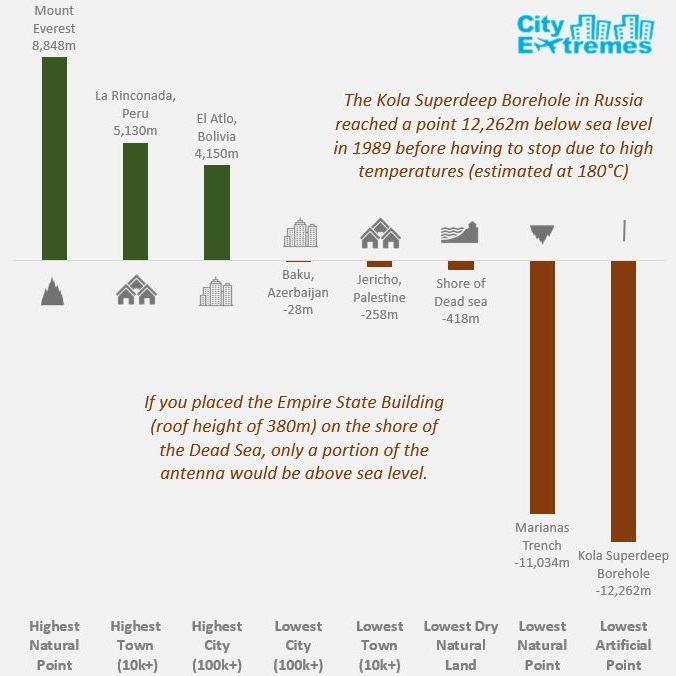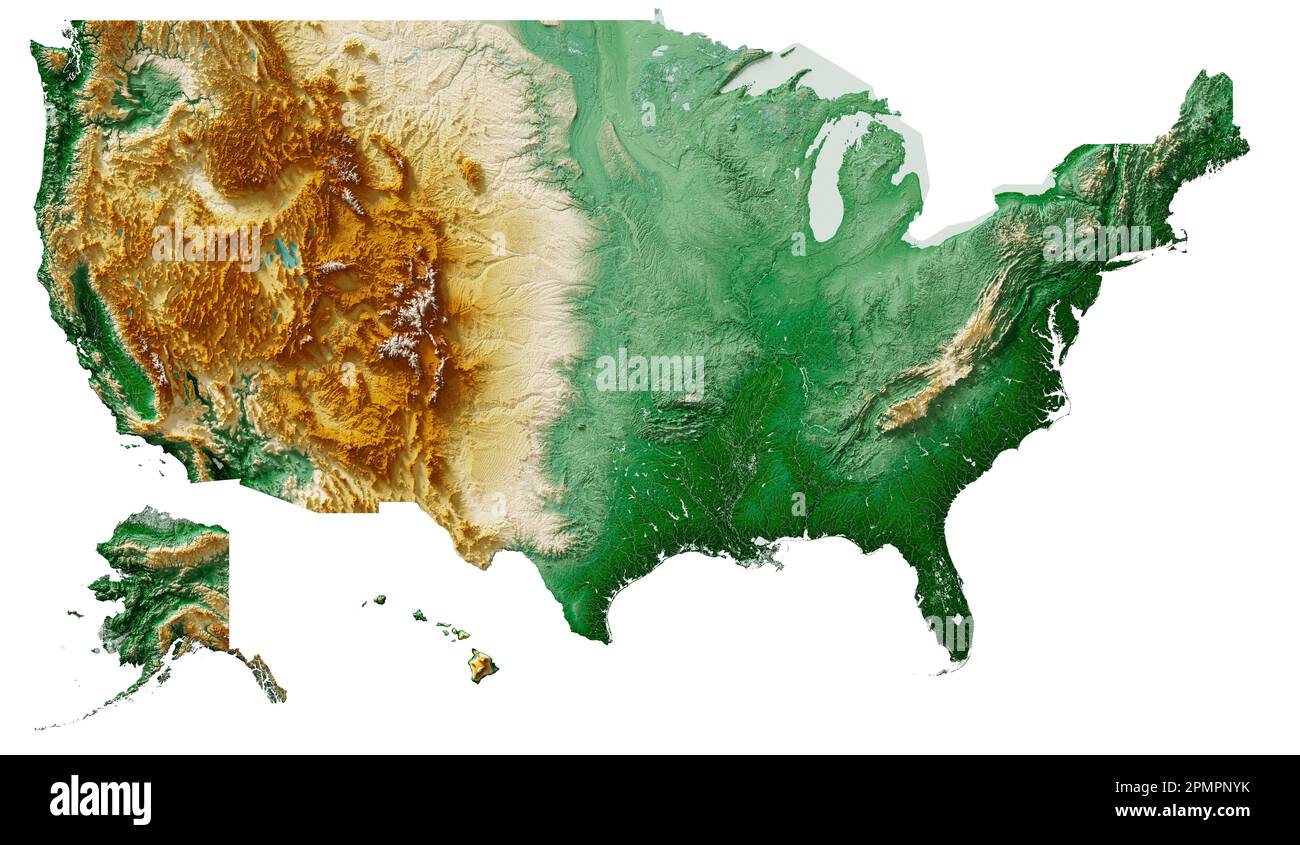So here we are, diving into the world of high-altitude cities in America. If you're a thrill-seeker, nature lover, or someone who's just curious about the highest elevation city in America, buckle up! This journey is gonna be epic, trust me. Whether you're planning a road trip or just want to expand your geographical knowledge, this article has got you covered. We're talking about cities that sit so high, they practically kiss the clouds. So, let’s get started, shall we?
When we say "highest elevation city in America," we're not just throwing fancy words around. These places are real, and they're as breathtaking as they sound. Imagine waking up every morning to views that make you feel like you're on top of the world—literally. It's not just about altitude; it's about the unique culture, stunning landscapes, and the sheer adventure that comes with living or visiting such places. Let's explore why these cities deserve your attention.
But before we dive deeper, let me drop a quick fact. Did you know that some of these high-altitude cities have elevations that exceed 10,000 feet? Yeah, that's how high we're talking. And trust me, it's not just about the numbers. It's about the experience, the challenges, and the beauty that comes with living at such dizzying heights. So, without further ado, let’s uncover the sky-high gems of America!
Read also:Rediscovering The Quirky Genius Of Rick Moranis
Table of Contents:
- Introduction
- Defining High Elevation
- Top Cities at High Elevations
- Living at High Altitude
- Health Effects of High Altitude
- Tourism in High Elevation Cities
- Climate and Weather
- Historical Significance
- Activities to Enjoy
- Conclusion
Defining High Elevation
Alright, let’s start by breaking down what we mean by "high elevation." In simple terms, elevation refers to the height of a location above sea level. But when we talk about cities with high elevation, we're usually referring to places that sit at least 5,000 feet above sea level. Now, that’s pretty high, right? But hold on, because some of the cities we’ll explore today go way beyond that. For instance, Leadville, Colorado, holds the title of being the highest incorporated city in the U.S., sitting at an elevation of 10,152 feet. That’s insane!
Living at such heights comes with its own set of challenges and perks. The air is thinner, meaning less oxygen, which can affect your breathing and physical activity. But hey, the views? Absolutely worth it. Imagine looking out your window and seeing snow-capped mountains stretching as far as the eye can see. It’s like living in a postcard.
Why Does Elevation Matter?
Elevation matters because it affects everything—from the weather to the way your body functions. If you're moving from sea level to a high-altitude city, your body might need some time to adjust. This process is called acclimatization, and it’s super important if you want to avoid altitude sickness. So, if you're planning a trip to one of these sky-high gems, make sure to take it slow and steady.
Top Cities at High Elevations
Now, let’s get down to business. Which cities in America boast the highest elevations? Here’s a quick rundown of some of the most notable ones:
- Leadville, Colorado: As mentioned earlier, this city holds the crown for being the highest incorporated city in the U.S. It’s a historic mining town with a rich cultural heritage.
- Alamosa, Colorado: Sitting at an elevation of 7,159 feet, Alamosa is known for its stunning natural beauty and proximity to the Great Sand Dunes National Park.
- Flagstaff, Arizona: At 7,000 feet, Flagstaff offers a perfect mix of urban life and outdoor adventure. It’s also a great base for exploring the Grand Canyon.
- Santa Fe, New Mexico: With an elevation of 7,199 feet, Santa Fe is a cultural hub that combines art, history, and breathtaking landscapes.
These cities aren’t just about their elevation; they’re about the experiences they offer. Whether it’s hiking through majestic mountains or exploring vibrant local cultures, there’s something for everyone.
Read also:Barry Gibb The Bee Gees Legendary Singer And His Unmatched Contribution To Music History
What Makes These Cities Unique?
Each of these high-altitude cities has its own charm. For instance, Leadville is famous for its mining history and annual festivals, while Flagstaff is a haven for stargazers and outdoor enthusiasts. Santa Fe, on the other hand, is all about its rich Native American and Spanish influences. So, no matter which city you choose to visit, you’re guaranteed to have an unforgettable experience.
Living at High Altitude
Living at high altitudes is not for the faint of heart. Sure, the views are amazing, but the challenges are real. One of the biggest hurdles is dealing with altitude sickness, especially for newcomers. Symptoms can range from headaches and nausea to more severe issues like shortness of breath and dizziness. But don’t worry, most people adjust pretty quickly.
Another factor to consider is the climate. High-altitude cities often experience extreme weather conditions, from freezing winters to intense sunlight during the summer. This means you’ll need to be prepared with the right gear and mindset. But hey, once you get used to it, you’ll realize that there’s no better place to call home.
Tips for Adapting to High Altitude
Here are a few tips to help you adapt if you’re moving to or visiting a high-altitude city:
- Stay hydrated. Drink plenty of water to combat the dry air.
- Take it slow. Don’t overexert yourself, especially during the first few days.
- Use sunscreen. The sun is stronger at higher elevations, so protect your skin.
- Consult a doctor. If you have any pre-existing health conditions, it’s a good idea to check with a medical professional before heading up.
Health Effects of High Altitude
Let’s talk about the health implications of living or visiting high-altitude cities. As I mentioned earlier, altitude sickness is a real concern. It happens when your body doesn’t get enough oxygen at higher elevations. Mild cases can be managed with rest and hydration, but severe cases may require medical attention. That’s why it’s important to listen to your body and take things slow.
On the flip side, living at high altitudes can also have some positive effects. Studies have shown that people living in these areas tend to have lower rates of certain diseases, like heart disease. This could be due to the increased cardiovascular exercise that comes with living at higher elevations. So, while there are challenges, there are also some pretty cool benefits.
How to Stay Healthy at High Altitude
Here are some strategies to stay healthy if you’re living or visiting a high-altitude city:
- Exercise regularly. This helps improve your cardiovascular fitness and makes it easier to adapt.
- Eat a balanced diet. Focus on foods that are rich in iron and other essential nutrients.
- Get enough sleep. Your body needs rest to recover and adjust to the new environment.
Tourism in High Elevation Cities
High-altitude cities are becoming increasingly popular among tourists. And why not? They offer a unique blend of adventure, culture, and natural beauty. Whether you’re into hiking, skiing, or just soaking in the views, these cities have something for everyone. Plus, they’re often less crowded than their lower-altitude counterparts, making them ideal for those who prefer a quieter getaway.
Some of the top attractions in these cities include national parks, historic landmarks, and outdoor adventure spots. For example, in Leadville, you can explore the historic mining sites and enjoy some of the best hiking trails in Colorado. In Flagstaff, you can visit the Lowell Observatory and marvel at the night sky. And in Santa Fe, you can immerse yourself in the vibrant art scene and sample delicious local cuisine.
Best Time to Visit
The best time to visit these cities depends on what you’re looking for. If you’re into winter sports, then the colder months are perfect. But if you prefer warmer weather and outdoor activities, spring and summer are ideal. Just remember to check the weather forecast before you go, as conditions can change rapidly at high altitudes.
Climate and Weather
The climate in high-altitude cities can be unpredictable. While they often experience milder summers compared to lower-altitude areas, winters can be brutally cold. Snowfall is common, and temperatures can drop significantly at night, even during the summer. This is why it’s important to pack the right clothing and gear if you’re planning a trip.
That being said, the weather in these cities can also be incredibly beautiful. Clear skies and stunning sunsets are a regular occurrence, making for some of the most breathtaking views you’ll ever see. So, while the weather might be a bit of a challenge, it’s also one of the things that makes these cities so special.
Seasonal Highlights
Each season in a high-altitude city brings its own set of highlights. In spring, you can enjoy the blooming wildflowers and milder temperatures. Summer is perfect for hiking and exploring the great outdoors. Fall brings stunning foliage and cooler weather, while winter is all about skiing and snowboarding. No matter when you visit, there’s always something to look forward to.
Historical Significance
Many of these high-altitude cities have rich historical backgrounds. Take Leadville, for example. It was once a booming mining town during the late 1800s, attracting fortune-seekers from all over the world. Today, it’s a charming small town with a deep appreciation for its past. Similarly, Santa Fe has a long history of Native American and Spanish influences, which can still be seen in its architecture and culture.
Understanding the history of these cities adds another layer to your experience. It’s like stepping back in time and getting a glimpse into what life was like for the people who first settled there. So, if you’re a history buff, these cities are a must-visit.
Preserving History
Preserving the history of these cities is crucial. Many of them have museums and historical sites that offer a glimpse into their past. For instance, in Leadville, you can visit the Tabor Opera House, which dates back to the late 1800s. In Santa Fe, the Palace of the Governors is a must-see for anyone interested in the city’s rich cultural heritage. These sites not only educate visitors but also help keep the stories of the past alive for future generations.
Activities to Enjoy
So, what can you do in these high-altitude cities? The list is endless! From hiking and skiing to exploring local markets and art galleries, there’s something for everyone. Here are a few ideas to get you started:
- Hike to the top of a mountain and enjoy the panoramic views.
- Go skiing or snowboarding during the winter months.
- Visit local museums and historical sites to learn about the city’s past.
- Sample delicious local cuisine and try some of the unique dishes.
- Attend a festival or cultural event to experience the local traditions.
These activities not only help you connect with the city but also give you a deeper appreciation for its unique qualities.
Getting the Most Out of Your Visit
To get the most out of your visit, make sure to plan ahead. Research the city’s top attractions and create an itinerary that suits your interests. Don’t forget to allow time for rest and relaxation, especially if you’re traveling from a lower elevation. And most importantly, be open to new experiences. You never know what you might discover!
Conclusion
And there you have it, folks! The highest elevation city in America is more than just a number on a map. It’s a place of breathtaking beauty, rich history, and endless opportunities for adventure. Whether you’re planning a trip or just curious about these sky-high gems, I hope this article has given you a better understanding of what makes them so special.


